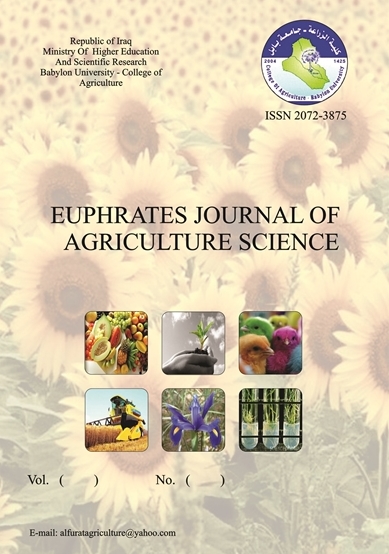Abstract
The experiment was conducted in the fields of the Department of Horticulture and Landscape Gardening, College of Agriculture, Al-Qasim Green University during the agricultural season (2017-2018) in order to study the effect of planting distance and organic fertilization on growth and yield of Broccoli (Brassica oleracea var. Italica), where the experiment included eight treatments for each replicate, which is the interaction between planting distances (35x50 cm and 50 x50 cm) and organic fertilization (15 tons.ha-1 rice waste and 3 tons.ha-1 poultry manure). The control treatment was (chemical fertilization NPK 300 kg.ha-1). The split-plot design system was used according to the Randomized Complete Block Design (RCBD), with three replicates, where the planting distances were placed in the main plot and the fertilization in the subplot. The averages were compared using the least significant difference (L.S.D) at the probability level 0.05. The most important results can be summarized as follows: The planting distance significantly affected the plant height and percentage of chlorophyll, where the planting distance (50 x 50 cm) gave the highest plant height for the plant and the planting distance (35 x 50 cm) gave the highest percentage of chlorophyll. It is noted that the results of organic fertilization with rice waste and poultry manure did not differ significantly from the results of chemical fertilization in the plant height and percentage of chlorophyll. The planting distance in all the traits of the studied quantitative yield and the organic fertilization did not differ from the chemical fertilization in the traits of the quantitative yield except for the trait of diameter and perimeter of the curd, where the superiority was significant for chemical fertilization compared to rice waste, which recorded the lowest diameter and perimeter. In the results of bi-interaction, it is noted that some bi-interaction has significantly affected the traits of the quantitative yield. No significant differences were observed in planting distances and fertilization factors on the traits of quantitative and qualitative yield. It is noted from the results of the bi-interaction that there is a variation in the significant and non-significant effect on the qualitative and quantitative traits.
